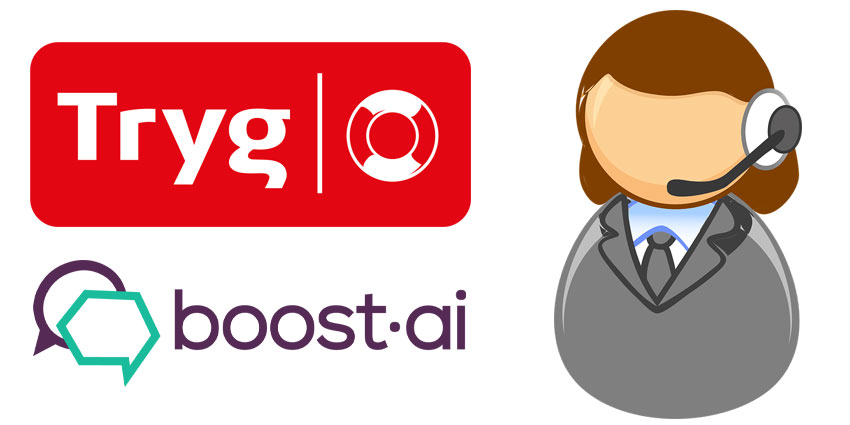Scandiavian Tryg A/S is one of Europe’s largest non-life insurance companies, with a suite of complex and diverse products. To amplify the capacity and quality of both internal training and their outbound customer support, they recently partnered with Boost.ai to build RoSa – a conversational AI-powered virtual agent, which is transforming customer service interactions and staff training. RoSa is named after two departments Rrådgivning Og salgstøtte and Salg (Support and Sales)
We spoke to Eivin Joensen, AI Supervisor at Tryg, who was responsible for helping to develop and implement RoSa – and also describes himself as “RoSa’s Dad”. Just like any parent he is proud of the accomplishment of his protégé:
“RoSa has changed my way of working…RoSa is like a young funny ‘girl’ with an attitude. Everybody loves RoSa”
Managing Complexity: An Intelligence Challenge…
Generating relevant answers when the questions themselves are not always clear cut, is a challenge in the insurance industry. “We face a lot of complexity during a normal day, but the customer service agent can’t remember [every detail about every product]. RoSa is so knowledgeable and reliable that even our most experienced staff ask her when in doubt.
“Trying to find an answer to a simple question can easily result in new questions. But RoSa can understand these type of queries, and provide new knowledge related to the topic. People are very satisfied with the answers, and ‘her’ way of letting them know what to do”.
RoSa greets support staff when they turn on their computers each day, and the company’s AI trainers use the virtual agent to distribute a daily message with updates on new products, changes in policies and updates about what RoSa has learned to answer since yesterday.
While avoiding the Uncanny Valley:
Indeed, RoSa is such a companionable colleague, that it was hard to remember that she was an AI at first – resulting in a conscious decision to dial back on the chit-chat and be more factual. As Joensen elaborated:
“At first the staff thought that I was the one replying to all the chats, which was great, because they felt like it was an actual human on the other side of the chat. Afterwards we took a new approach, and got RoSa to not expand into deep conversations, but to provide many clues, links and answers with a few keywords. So ‘she’ is considered more of a ‘fact machine’.
“Our Support department use RoSa when in doubt, which empowers the answer they give to customers. The support team has now more time to do many other tasks, due to the availability of the answers from RoSa”
So it seems like the team, especially those on the front line of customer interaction, really want their AI colleague to be a fast and accurate source of factual information, which they can then contextualise with the personal touch their interaction requires. Saving time finding the right information about a complex and ever-changing range of products via natural language and keywords invests them with more authority and ability to answer customer questions fast, and RoSa is their secret superpower.
Joenson and his colleagues foresee more direct interaction between the AI and customers. Routine customer service enquiries could soon be fully serviceable via RoSa, creating faster self-service interactions, and freeing human operatives for more demanding or exceptional queries.
“[Presently] customers do not know about the AI supporting the CSR they are talking to, RoSa is purely an internal tool. But wouldn’t it be great if the customer could choose to solve the problem with an AI instead?”
She keeps learning, and as Joenson concludes, in the future, “the sky’s the limit!







